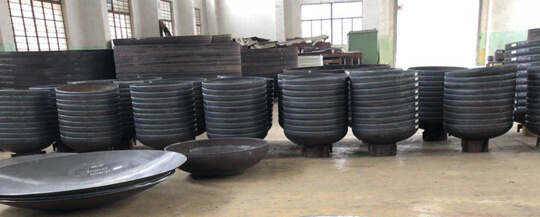In the process of production, the head will be deformed and machined during cold forging, which can make the forging die bear high load during operation. Therefore, it is necessary to use high-strength forging die and adopt hard lubrication film treatment method to prevent wear and bonding. In this process, in order to prevent the blank from cracking, intermediate annealing is carried out to ensure the required deformation capacity. To maintain good lubrication, the stainless steel head can phosphating the blank. When using bar stock and wire rod for continuous processing, the section cannot be lubricated due to current process limitations. Now people are also studying the method of using phosphating lubrication. I don't know if it is possible.
The advantage of the warm forging of the head is that it can improve the precision and quality of the forging without the forming force as large as that of the cold forging. The application of warm forging technology is closely related to the material, size and complexity of forging. Generally speaking, small precision die forgings of low carbon and low alloy steels with less complicated shapes can be formed by cold forging process; for small and medium carbon steel precision die forgings with complicated shapes, cold forging method is difficult to solve the forming problem. Or simply using the cold forging process, the cost is too high, then warm forging can be used.
The recrystallization temperature of the head steel is about 750℃. When forging at 700℃or higher, the deformation energy can be dynamically released, and the forming resistance is drastically reduced. When forging at 700-850℃, the forgings have less scale, the surface decarburization is less, and the forgings change little. When forging at 950℃or higher, although the forming force is smaller, the forging scale and surface decarburization are severe, and the forging size changes greatly. Therefore, forging in the range of 700-850℃can obtain forgings with better quality and precision.
The hot forging of the head is a forging process carried out above the metal recrystallization temperature, and the hot forging can reduce the deformation resistance of the metal during the operation, thereby reducing the forging pressure required for the blank during the deformation process, and the tonnage of the forging equipment is greatly reduced. Changing the as-cast structure of the ingot, recrystallization in the hot forging process, the coarse as-cast structure becomes a new structure of fine grains, and reduces the defects of the as-cast structure and improves the mechanical properties of the steel; In addition, hot forging can improve the plasticity of steel, which is especially important for high-alloy steels that are brittle and difficult to forge at low temperatures.
